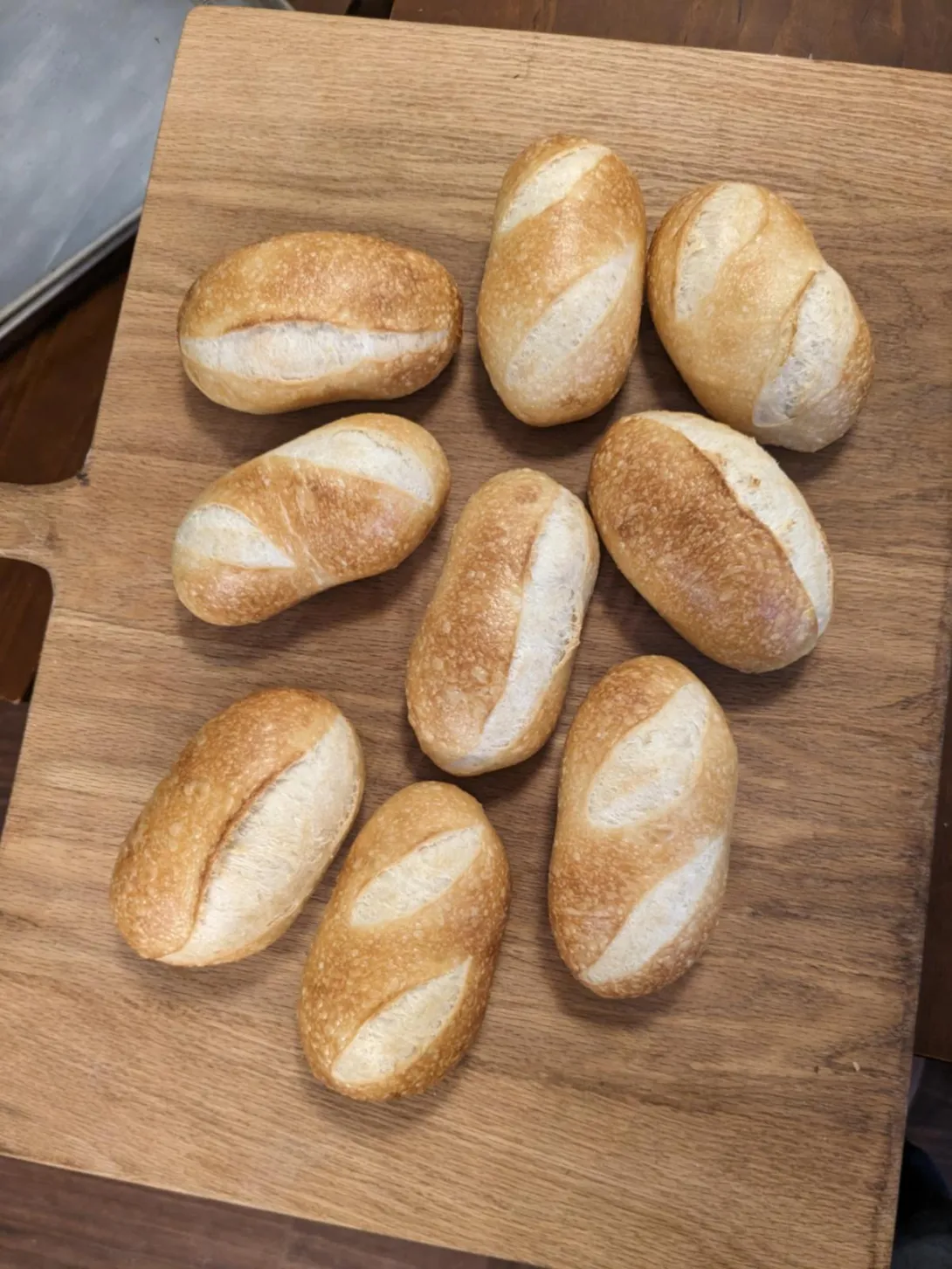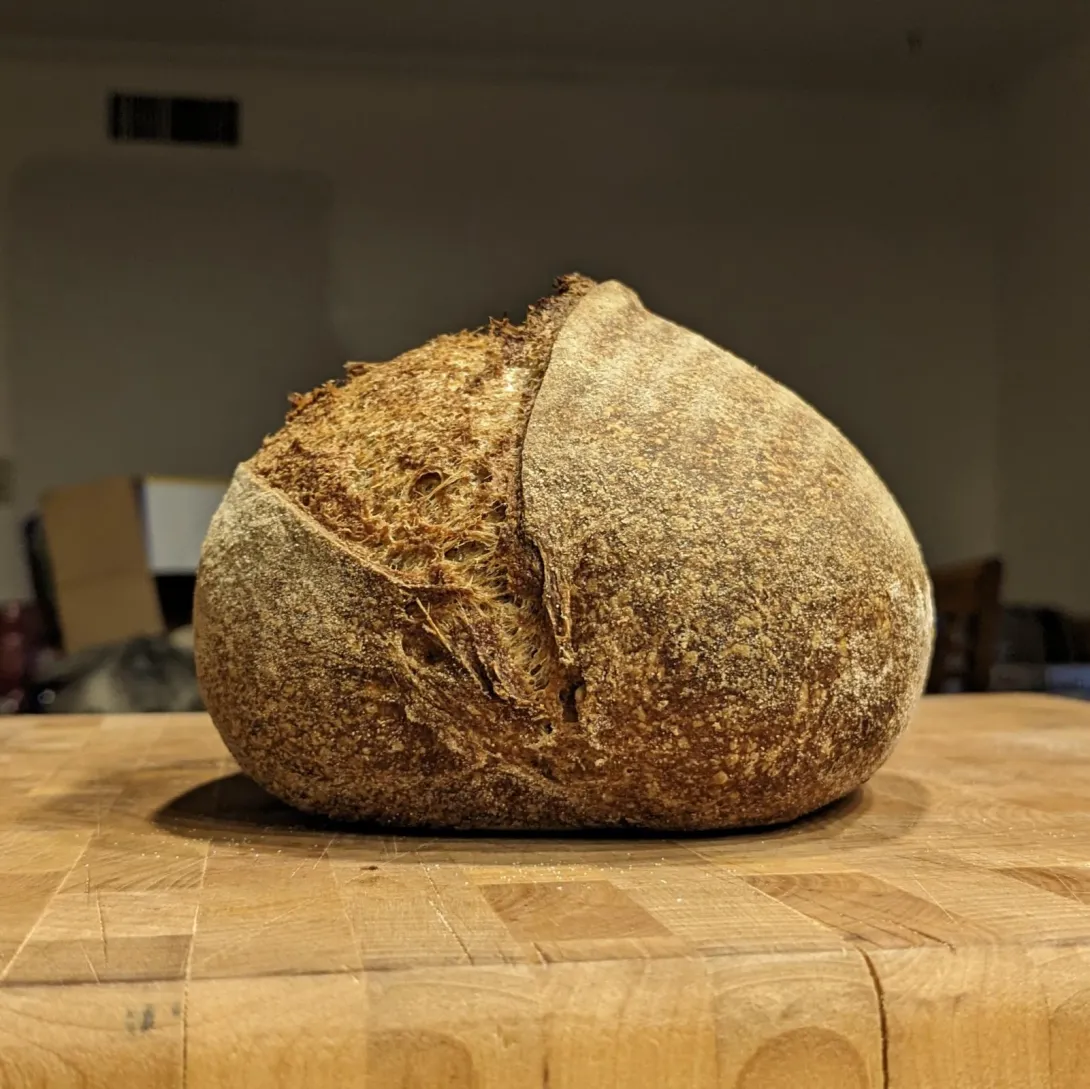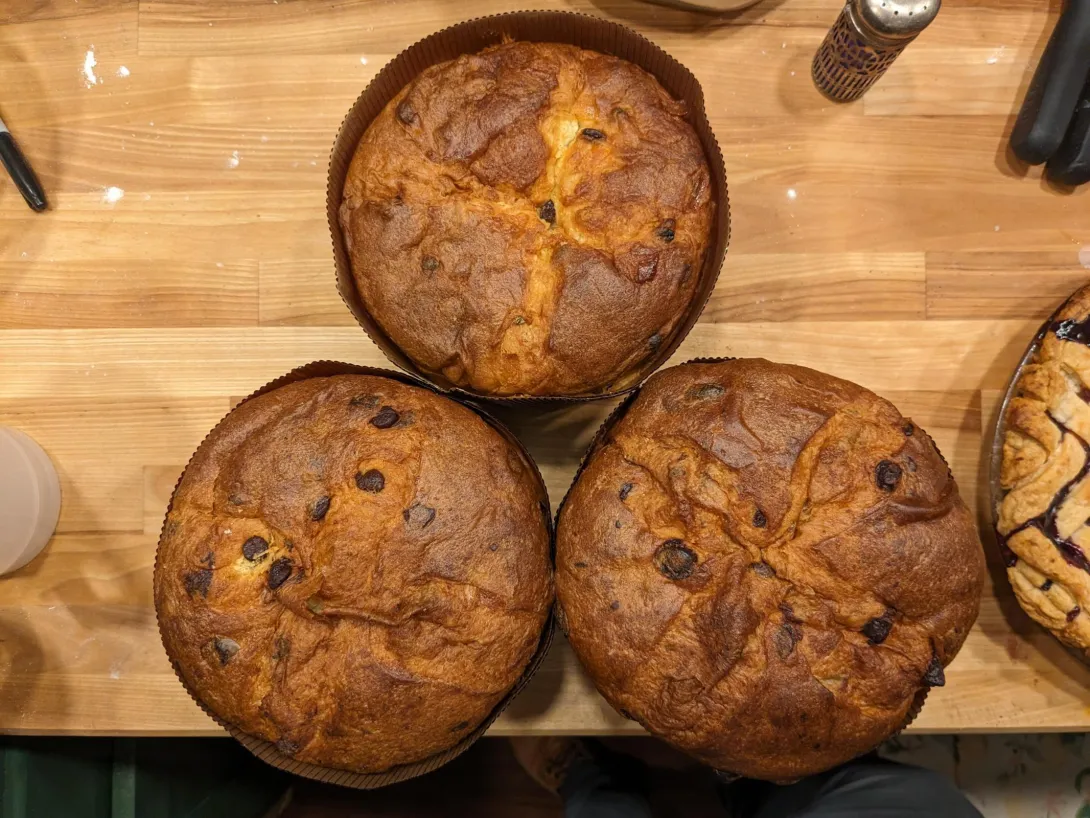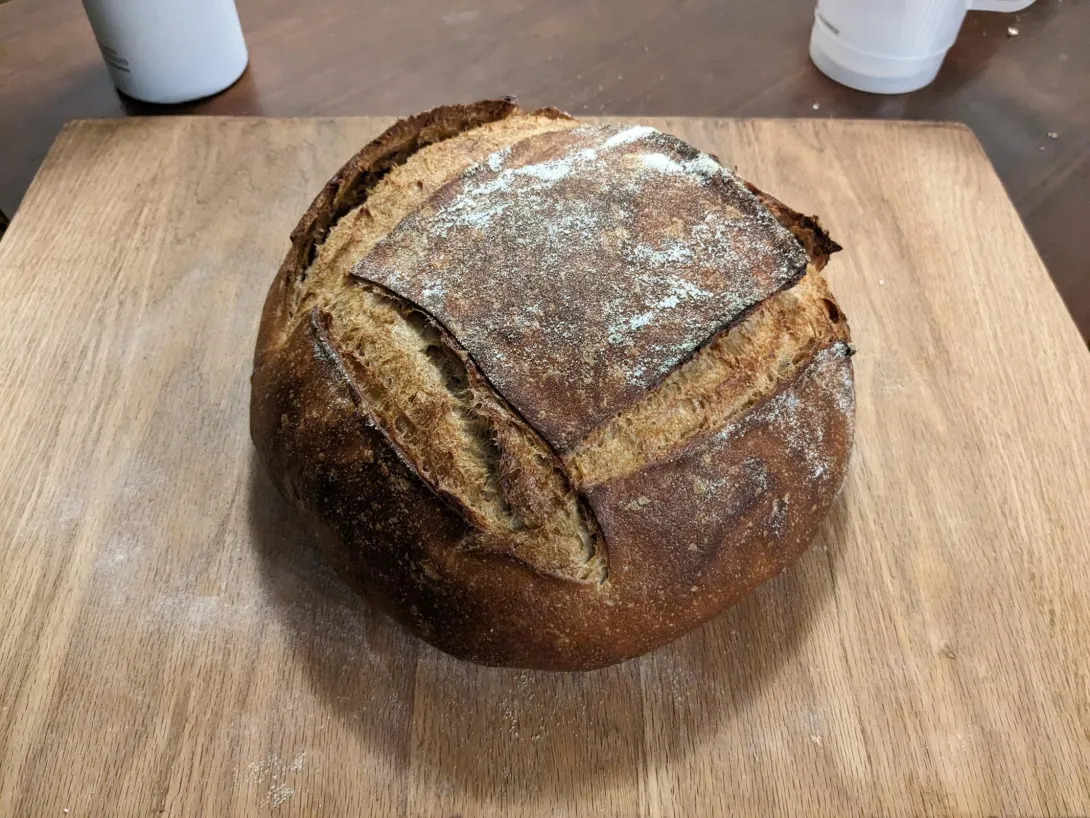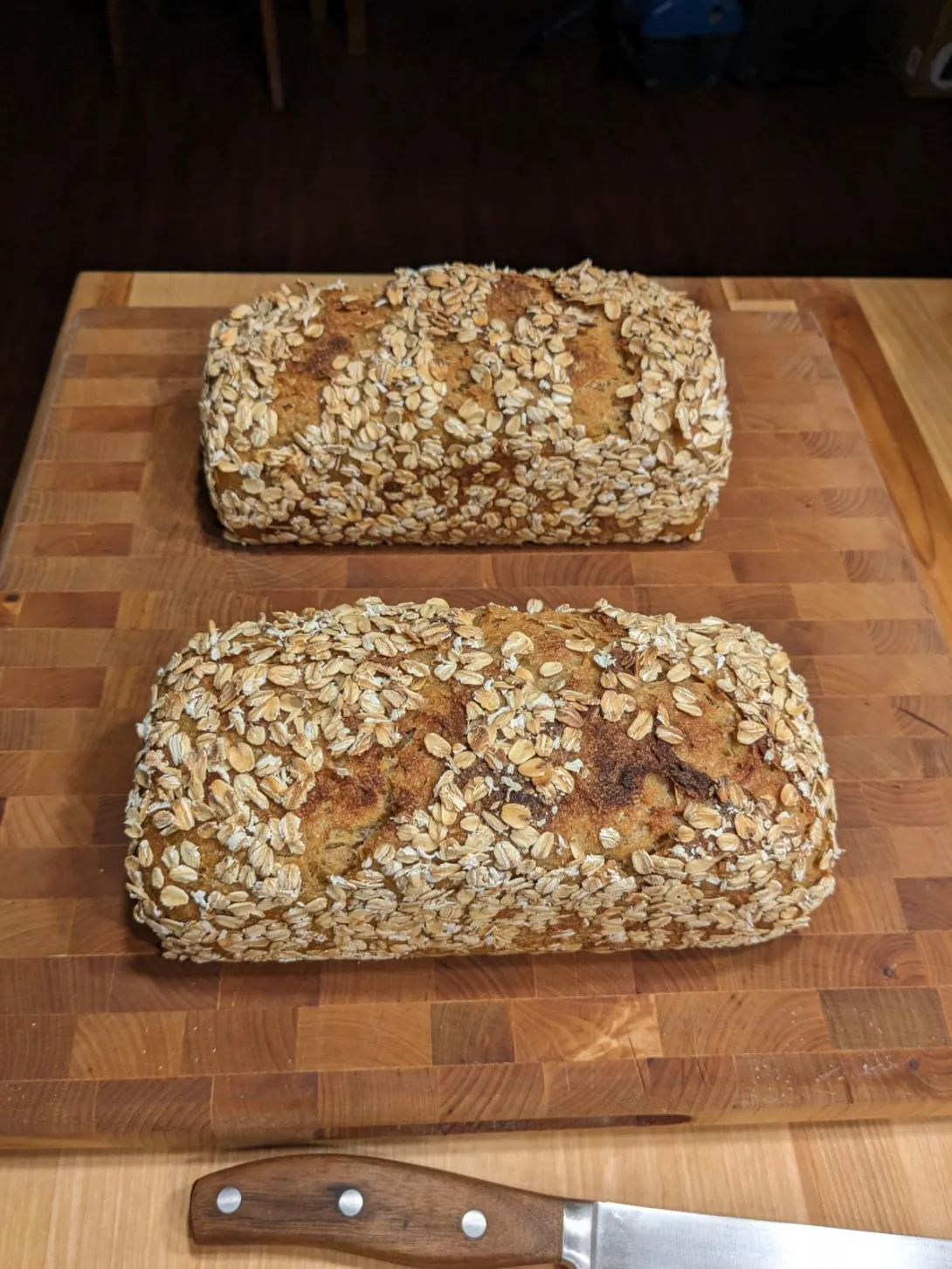Panettone 2025
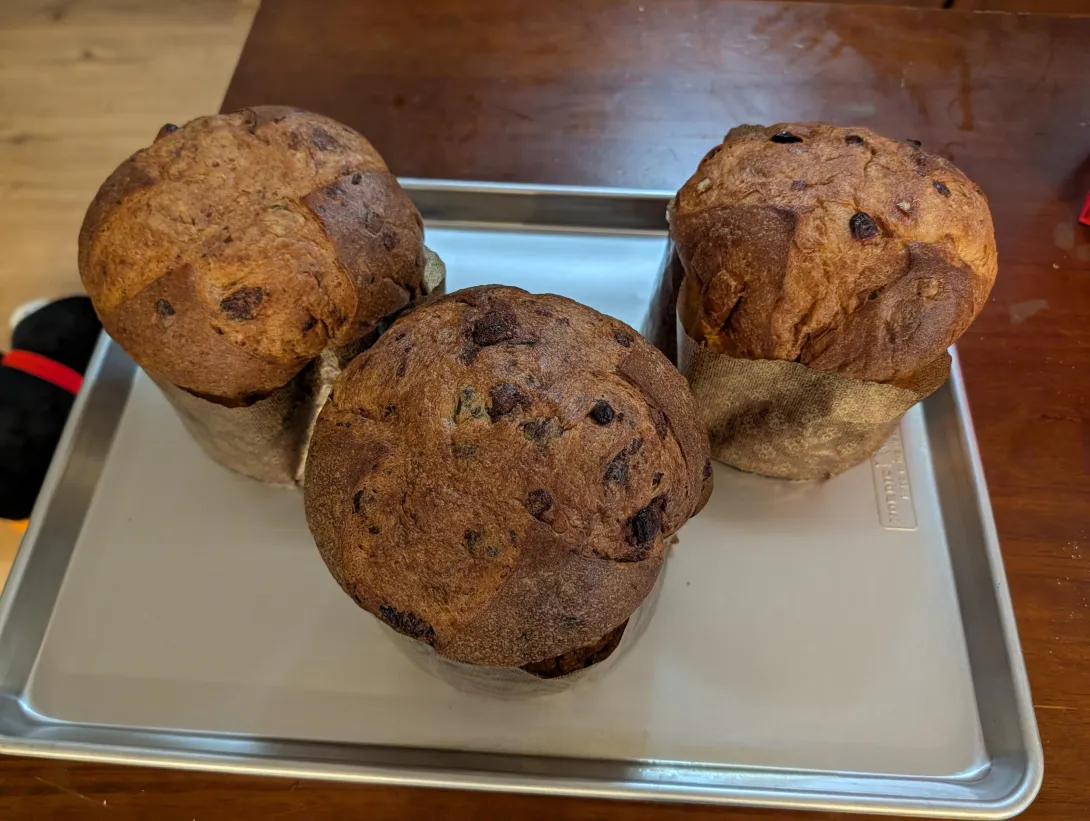
I wish there was a way for me to practice making panettone more than the one time a year that I bring it to my parents' house to share with the whole family. I used the Roy recipe again, since it worked so well before and I didn't want to risk ruining my one batch. Luckily, this year they turned out well enough that my wife wants me to make more for her later. At least, that's what she says now; pregnancy makes her tastes change quite quickly.
